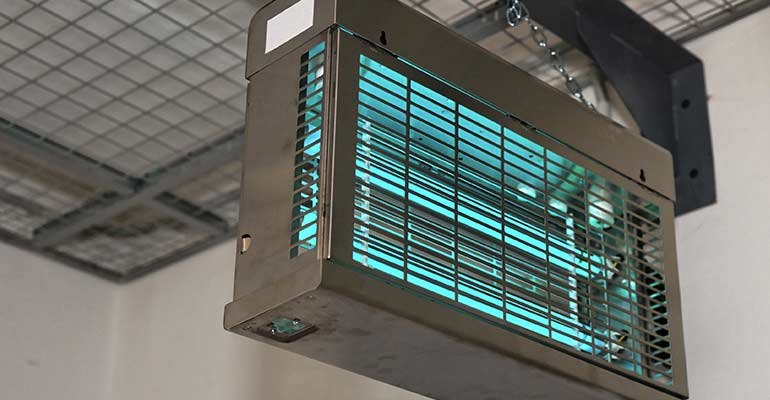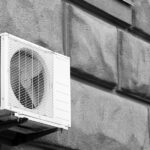
The Role of UV Air Sanitizers in Safe Environments
Maintaining a clean and healthy environment is more crucial than ever. UV air sanitizers have emerged as a powerful tool in this quest for cleanliness, utilizing ultraviolet light to effectively neutralize airborne pathogens. These devices not only help in reducing the spread of viruses and bacteria but also contribute to a fresher, more breathable indoor atmosphere. Understanding the science behind UV air sanitizers and their benefits can significantly enhance the safety and well-being of any space.
Understanding UV Air Sanitizers
UV air sanitizers are devices designed to improve indoor air quality by utilizing ultraviolet light to neutralize airborne contaminants. These sanitizers work by emitting UV-C light, which targets the DNA or RNA of microorganisms like bacteria, viruses, and mold spores. This exposure damages their genetic material, preventing them from reproducing and effectively rendering them harmless.
By integrating UV air sanitizers into your environment, you can significantly reduce the presence of harmful pathogens and create a cleaner, safer atmosphere. These devices are particularly useful in spaces where air quality is a concern, such as hospitals, offices, and homes. Their ability to sanitize air continuously makes them a valuable addition to modern air purification systems.
The Science Behind UV Light
UV light, or ultraviolet light, is a form of electromagnetic radiation with wavelengths shorter than visible light but longer than X-rays. It is divided into three types: UV-A, UV-B, and UV-C. For air sanitization, UV-C light is most effective. UV-C light, with its short wavelength, is particularly adept at disrupting the DNA and RNA of microorganisms, including bacteria and viruses. When these microorganisms are exposed to UV-C light, their genetic material is damaged, inhibiting their ability to replicate and causing them to die.
This precise mechanism makes UV-C light a powerful tool for air sanitization. By incorporating UV-C technology into air sanitizers, environments can be continuously protected from airborne pathogens, ensuring a cleaner and healthier atmosphere.
Benefits of Using UV Air Sanitizers
UV air sanitizers offer several compelling advantages for maintaining a healthier indoor environment. Here are key benefits:
- Effective Pathogen Reduction: UV air sanitizers can significantly reduce airborne bacteria, viruses, and mold spores, minimizing the risk of infections and illnesses.
- Improved Air Quality: By continuously sanitizing the air, these devices help remove contaminants, resulting in cleaner, fresher air that contributes to overall well-being.
- Odor Elimination: UV light can neutralize unpleasant odors by targeting the microorganisms that cause them, improving the overall smell of indoor spaces.
- Low Maintenance: Unlike some air purification systems that require frequent filter changes, UV air sanitizers typically need minimal maintenance, making them a convenient option for long-term air quality management.
UV Air Sanitizers vs. Traditional Air Purifiers
Traditional air purifiers and UV air sanitizers serve different roles in improving indoor air quality. While both aim to reduce airborne contaminants, they operate through distinct methods. Traditional air purifiers use filters to capture dust, pollen, and particles from the air. They are effective at trapping larger particles but may not eliminate all pathogens or airborne microorganisms.
On the other hand, UV air sanitizers use ultraviolet light to inactivate microorganisms by disrupting their DNA or RNA. This process ensures a high level of pathogen destruction and can be a complementary technology to air purifiers. Combining UV air sanitizers with traditional filters can provide a more comprehensive approach to maintaining cleaner, healthier air.
Choosing the Right UV Air Sanitizer
Selecting the appropriate UV air sanitizer involves several important considerations to ensure optimal performance and effectiveness. Here are four key factors to keep in mind:
- UV-C Intensity: Look for units that offer high-intensity UV-C light, as stronger UV-C rays are more effective at destroying microorganisms. Ensure the sanitizer has the right intensity for your space size.
- Coverage Area: Choose a UV air sanitizer designed for the size of your room or area. Units with a larger coverage area are essential for effectively sanitizing bigger spaces.
- Filter Integration: Some UV air sanitizers come with integrated filters, which can enhance overall air purification by capturing larger particles in addition to sanitizing the air.
- Maintenance Requirements: Consider the ease of maintenance, including bulb replacement and cleaning. Devices with user-friendly maintenance processes will be more convenient to use over time.
Installation and Maintenance of UV Air Sanitizers
Proper installation and regular maintenance are crucial for the effective operation of UV air sanitizers.
Installation typically involves placing the unit in a location where it can treat the maximum amount of airflow. This might be near an air handler or duct system if the unit is designed for HVAC integration. Ensure the device is securely mounted or positioned according to the manufacturer’s guidelines, and follow all electrical safety protocols.
Maintenance is relatively straightforward but essential for maintaining optimal performance. Regularly check and replace UV-C bulbs as recommended by the manufacturer, typically every 6 to 12 months. Clean the unit’s surfaces and any integrated filters to prevent buildup that can hinder effectiveness. By adhering to these maintenance practices, you can ensure the UV air sanitizer continues to provide effective air purification.
Applications of UV Air Sanitizers
UV air sanitizers are versatile tools that can be utilized across various settings to enhance air quality. Here are some key applications:
- Healthcare Facilities: In hospitals and clinics, UV air sanitizers help reduce the spread of infections by eliminating airborne pathogens, creating a safer environment for patients and staff.
- Commercial Spaces: Offices, retail stores, and restaurants benefit from UV air sanitizers by improving overall air quality and reducing the transmission of illnesses among employees and customers.
- Residential Homes: UV air sanitizers in homes can reduce allergens, dust, and microorganisms, contributing to a healthier living environment, particularly beneficial for individuals with allergies or respiratory conditions.
- Industrial Environments: In manufacturing and processing plants, UV air sanitizers help maintain clean air by controlling contaminants and protecting both equipment and workers from harmful airborne particles.
Effectiveness of UV Air Sanitizers
The effectiveness of UV air sanitizers in improving indoor air quality is well-documented and depends on several factors.
UV air sanitizers are highly effective at neutralizing airborne microorganisms such as bacteria, viruses, and mold spores. The UV-C light emitted by these devices disrupts the DNA or RNA of pathogens, rendering them incapable of reproduction and ultimately leading to their destruction. The effectiveness can vary based on the intensity of the UV-C light, the exposure time, and the design of the unit.
In practice, UV air sanitizers have shown significant success in reducing microbial load in various environments, including hospitals, offices, and homes. However, their effectiveness is maximized when used in conjunction with other air purification methods, such as HEPA filters, to address a broader range of airborne contaminants.
Safety Considerations with UV Air Sanitizers
When using UV air sanitizers, it’s important to address several safety considerations to ensure their effective and secure operation.
- Avoid Direct Exposure: UV-C light can be harmful to human skin and eyes. Ensure that the UV air sanitizer is installed in a way that prevents direct exposure to UV-C rays. Many units are designed to be installed within HVAC systems or enclosed fixtures to mitigate this risk.
- Proper Installation: Follow the manufacturer’s installation instructions carefully to avoid issues such as leaks or electrical hazards. Incorrect installation can lead to reduced effectiveness or safety hazards.
- Regular Maintenance: Replace UV-C bulbs according to the manufacturer’s recommendations, typically every 6 to 12 months. Old or malfunctioning bulbs can become less effective and potentially unsafe.
- Ventilation: Ensure adequate ventilation around the UV air sanitizer to prevent the accumulation of ozone, which can be a byproduct of some UV-C devices. Opt for models that are certified to produce minimal ozone or feature ozone-reducing technology.
Future Trends in UV Air Sanitization
The field of UV air sanitization is rapidly evolving, with several promising trends shaping its future.
- Advanced UV-C Technologies: Emerging technologies are enhancing UV-C effectiveness, with innovations in lamp design and light intensity improving pathogen elimination and extending the lifespan of UV-C bulbs.
- Integration with Smart Systems: Increasingly, UV air sanitizers are being integrated with smart technology, allowing for real-time monitoring and control through mobile apps. This integration enables users to track air quality and adjust settings for optimal performance.
- Hybrid Purification Systems: Future models are likely to combine UV-C with other purification technologies, such as HEPA filters and ionizers, to provide a more comprehensive approach to air cleaning.
- Energy Efficiency: Advances in energy-efficient designs are expected to reduce the power consumption of UV air sanitizers, making them more environmentally friendly and cost-effective to operate.
UV air sanitizers play a crucial role in maintaining safe and healthy environments by effectively neutralizing airborne pathogens and enhancing air quality. Their ability to eliminate harmful microorganisms makes them an invaluable addition to various settings, from healthcare facilities to residential homes.
If you’re interested in improving the air quality of your space with advanced UV air sanitization, Cool Factory, Inc is here to help. Based in Sterling, VA, we offer expert guidance and solutions to meet your needs. Contact us today at (703) 713-5113 to learn more about our UV air sanitizers and how they can benefit your environment. Your journey to cleaner, safer air starts now.






